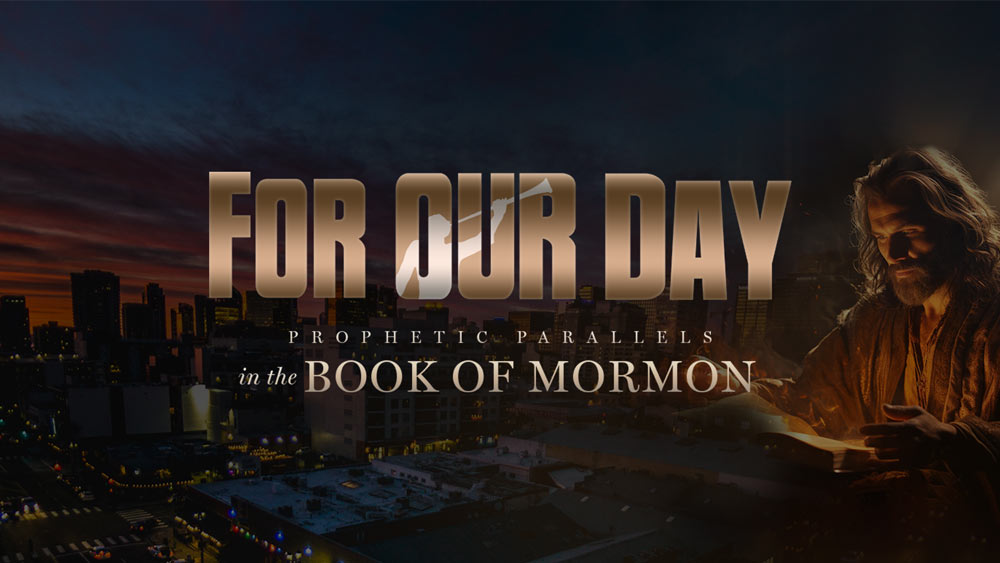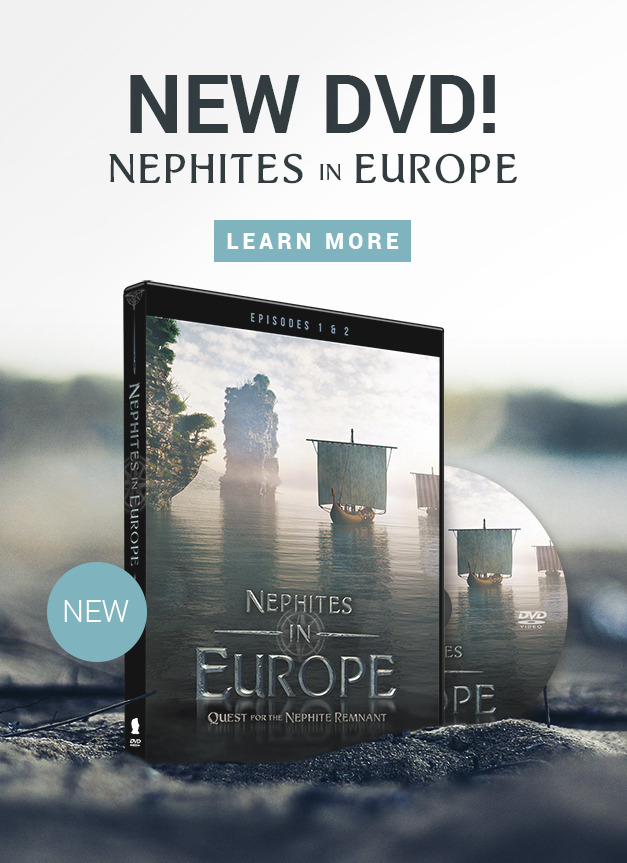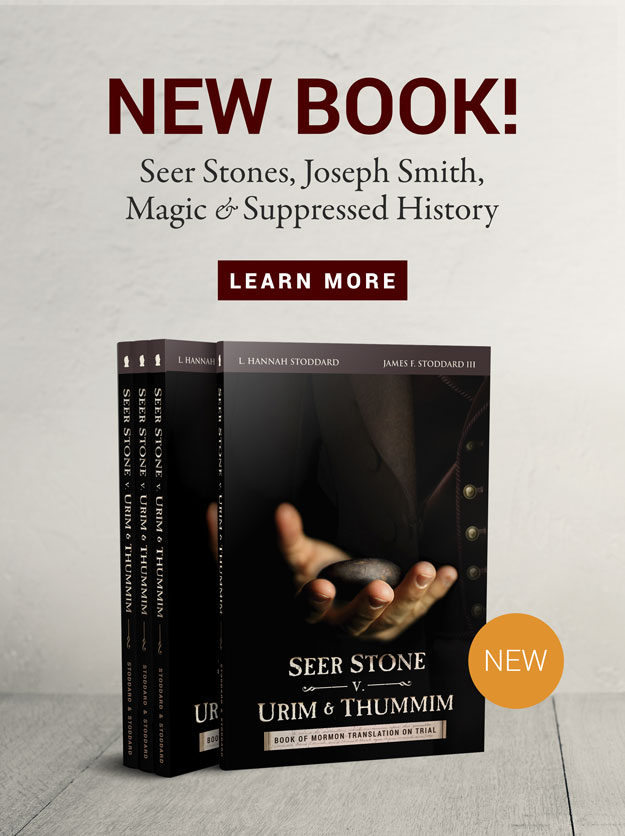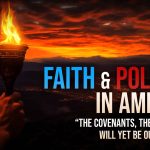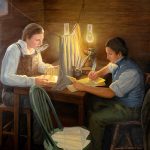Summary
In 1836, the keys to direct the work of gathering the House of Israel were given to Joseph Smith by Moses in the Kirtland Temple (see D&C 110:11). Seven years later, the first missionaries were sent to the Polynesian islands, and later to Japan.
The story of Hagoth in the Book of Mormon, a Nephite who built several ships and sailed away with a large group of Nephites (Alma 63:4-9), has sparked an interest in the origins of the Polynesian people. Many statements have been made by Presidents of the Church and members of the Twelve Apostles in regard to their belief that the Polynesian people originated from Lehi’s American colony.
Inspired Teachings
Polynesia
Mark E. Petersen
The Polynesian Saints are characterized by a tremendous faith. Why do they have this great faith? It is because these people are of the blood of Israel. They are heirs to the promises of the Book of Mormon. God is now awakening them to their great destiny. As Latter-day Saints we have always believed that the Polynesians are descendants of Lehi and blood relatives of the American Indians, despite the contrary theories of other men. 1
George Q. Cannon
The doctrine that the Hawaiian people and all other Polynesians are heirs to the blessings promised to the posterity of Abraham had its origin through George Q. Cannon. While he was at Lahaina, he received a knowledge directly from the Lord that the Hawaiians were of the house of Israel. From this time on Elder Cannon and his associates began to teach that the Hawaiian people were an offshoot branch of Israel through the posterity of Lehi, the Book of Mormon prophet. 2
Patriarchal Blessings
Paul Cheesman notes in Early America and the Polynesians that Bruce G. Pitt, a graduate student, “viewed a portion of microfilm #34 in the BYU library” which contained the patriarchal blessings given to these people in regard to the lineage declared in the blessings. The following information was found: “Of 321 total Polynesian lineages viewed, 155 were declared to be of Manasseh, 2 of Manasseh and Ephraim, 68 of Joseph, 62 of Israel, 4 of Jacob, 28 of Ephraim, 1 of Lehi and 1 of Japeth. . . .
Another [graduate] researcher, Max Hirschi, recorded that out of 35 patriarchal blessings given to Polynesians, thirteen were from the tribe of Ephraim, fourteen were told they were from Manasseh, and the other eight were of the tribe of Joseph”.
During Dr. Paul Cheesman’s visits to the islands, he questioned patriarchs in the various places and found “that nearly three-fourths [of the declared lineages] were from Manasseh and one-fourth were from Ephraim, with some being designated as descendants of the tribe of Joseph”. Since Lehi was a descendant of Manasseh (Alma 10:3) and Ishmael was a descendant of Ephraim (Journal of Discourses 23:184), the common lineage of these two descendants of Joseph who was sold into Egypt and the Polynesian Saints gives support to the theory that the Polynesians came from the American Nephites. 3
Japan
Heber J. Grant
According to Alma Taylor’s reminiscences of the event [Elder Heber J. Grant’s prayer dedicating the land of Japan for missionary work in 1901], Elder Grant “spoke of those who, because of iniquity, had been cut off from among the Nephites . . . and said we felt that through the lineage of those rebellious Nephites who joined with the Lamanites, that the blood of Lehi and Nephi [and of all Israel] had been transmitted unto the people of this land, many of whom have the features and manners of the American Indians, [and he] asked the Lord that if this were true that He would not forget the integrity of His servants Lehi and Nephi and would verify the promises made unto them concerning their descendants in the last days upon this [the Japanese] people for we felt that they were a worthy nation”. 4
Hawaii
Matthew Cowley
Brothers and sisters, you are God’s children—you are Israel. You have in your veins the blood of Nephi. 5
New Zealand
David O. McKay
We express gratitude that to these fertile islands thou didst guide descendants of Father Lehi and hast enabled them to prosper. 6
Spencer W. Kimball
And so it seems to me rather clear that your ancestors moved northward and crossed a part of the South Pacific. You did not bring your records with you, but you brought much food and provisions. And so we have a great congregation of people in the South seas who came from the Nephites, and who came from the land southward and went to the land northward, which could have been Hawaii. And then the further settlement could have been a move southward again to all of these islands and even to New Zealand. The Lord knows what he is doing when he sends his people from one place to another. That was the scattering of Israel. Some of them remained in America and went from Alaska to the southern point. And others of you came this direction.
[President Spencer W. Kimball continued by quoting former President Joseph F. Smith as saying:]
“I would like to say to you brethren and sisters from New Zealand, you are some of Hagoth’s people, and there is No Perhaps about it!” He didn’t want any arguments about it. That was definite. So you are of Israel. You have been scattered. Now you are being gathered. 7
It might be of interest to you to know that when Elder Spencer W. Kimball set me apart for my mission to New Zealand in 1946, he said: “We bless you with power and the ‘gift of tongues’ to learn the language of the Maoris. . . . We set you apart among the Children of Lehi to do good.” 8
Gordon B. Hinckley
Again, there was something prophetic about it. Here were two great strains of the house of Israel the children of Ephraim from the isles of Britain, and the children of Lehi from the isles of the Pacific. 9
Hugh B. Brown
We thank Thee, O God, for revealing to us the Book of Mormon, the story of the ancient inhabitants of America. We thank Thee that from among those inhabitants, the ancestors of these whose heads are bowed before Thee here, came from the western shores of America into the South Seas pursuant to Thy plan and now their descendants humbly raise their voices in grateful acknowledgement of Thy kindness, Thy mercy, and Thy love for them and those who went before them.
We humbly thank Thee that this building is erected in this land, so that those faithful Maoris who came here in early days, descendants of Father Lehi, may be remembered by their descendants and saved through the ordinances that will, in this House, be performed in their behalf. 10
Matthew Cowley
Elder Matthew Cowley tells of a great convention held in 1881 that represented all of the native tribes of New Zealand. They were gathered at a native village near Mastertown, near Wellington. Many who attended that conference were old enough to have seen the first Christian missionaries arrive in New Zealand, and all who attended belonged to a Christian church. They were Catholics, Methodists, or Presbyterians. One of the dominant topics considered was why the Maoris were no longer religiously unified as they had been before Christianity came to them. If Christianity was the higher light—the true religion—why were they divided into many churches? So they began asking themselves which of these Christian churches was the right one for the Maori race and which one they should all belong to so that there would be only one church among them. Not knowing the answer and not being able to decide in their debate, they turned to their wisest sage, Paora Potangaroa, and asked him which church they should all join. He said he would have to think on it and then went to his own residence which was nearby. After three days of fasting and prayer, asking Jehovah which was the right church for the Maori people, he returned to his people and said: “My friends, the church for the Maori people has not yet come among us. You will recognize it when it comes. Its missionaries will travel in pairs. They will come from the rising sun. They will visit with us in our homes. They will learn our language and teach us the gospel in our own tongue. When they pray they will raise their right hands.”
Paora Potangaroa then asked Ranginui Kingi to write down what he was going to say and his words were proclaimed to his people at the “eight-years house” on the 16th day of March 1881. Several things were said of interest to us: First, the year 1881 is the “day of fulness”; that is the year that the missionaries first taught the fulness of the gospel to the Maori people. It is also the year W. M. Bromley arrived to preside over the mission. He was told before leaving Utah “that the time had come to take the gospel to the Maori people.” Potangaroa said the next year, 1882, would be the year of the “sealing.” It was in 1882 when they were first taught about the sealing ordinances performed in the temple. He said the third year, 1883, would be the year of “the honoring,” when they would pay “tribute to whom tribute was due, custom to whom custom . . . honor to whom honor” (See Romans 13:7). Elder Cowley interpreted that as the year when Maoris joined the Church in great numbers and gave “tribute to whom tribute was due [and] custom to whom custom” was due as they began worshiping the Lord.
The prophecy went on to say that they were the lost sheep of the house of Israel. They would learn of the scepter of Judah, and of “Shiloh, the king of peace.” They would also learn of “the sacred church with a large wall surrounding it.” There would be an “increase of the[ir] race” and of their faith, love, and peace. That was at a time when the Maoris were beginning to be exterminated, much as the American Indian was in the United States. There was a great deal of apprehension among them, a fear they would disappear as a people.
This covenant was written down on a piece of paper, and at the top of the piece of paper they drew an “all-seeing eye.” This prophecy was then placed in a cement monument in the eight-years house where the convention was held. It remained there from 1881 until 1929, when a Maori sect known as the Ratana Church, in groping for substantiation that they were the true church of the Maoris as foretold by Potangaroa, broke open the cement monument to get at his prophecy, hoping to find something in it that would establish their claim to be the right church for the Maori. Unfortunately, the storage chamber which contained the prophecy had not been hermetically sealed and the paper had been so damaged by moisture that nothing was legible on it.
That was 1929. In 1944, Matthew Cowley was the New Zealand mission president. He was there during the war years, and the only American missionaries he had were himself, his wife, and their daughter. They held a convention for the Maoris in the same area where Paora Potangaroa gave his prophecy in 1881. Present at the 1944 convention was Eriata Nopera, another great Maori chief. When he rose to speak, he told his people that he had been a little boy there when Paora Potangaroa gave his prophecy and repeated what he remembered of the prophecy. At the end of that day’s convention, one of the women attending the convention had her husband go fetch parcel wrapped in brown paper from a trunk in their house. When he brought her the parcel, she called President Cowley and Eriata Nopera into an adjoining room and gave it to them. They opened the parcel and found a photograph of Potangaroa’s written prophecy wrapped up in it.
What had happened was that in 1881, when the prophecy was written down by Ranginui, a photographer in Wellington had heard that a Maori had made a prophecy. He traveled out to that village and asked for permission to photograph it. This was granted and he photographed the prophecy before it was sealed in the cement monument. This woman’s family got a copy of that photograph and had kept it since. She then gave it to Brother Nopera, who in turn gave it to President Matthew Cowley. That is the way we know what was in Paora Potangaroa’s prophecy. 11
Samoa
Spencer W. Kimball
I thought to read to you a sacred scripture which pertains especially to you the islanders of the Pacific. It is in the sixty-third chapter of Alma [He then read the account of Hagoth.]
And so it seems to me rather clear that your ancestors moved northward and crossed a part of the South Pacific. You did not bring your records with you, but you brought much food and provisions. And so we have a great congregation of people in the South seas who came from the Nephites, and who came from the land southward and went to the land northward, which could have been Hawaii. And then the further settlement could have been a move southward again to all of these islands and even to New Zealand. The Lord knows what he is doing when he sends his people from one place to another. That was the scattering of Israel. Some of them remained in America and went from Alaska to the southern point. And others of you came this direction. 12
Tonga
Robert E. Parsons
I asked Elder John Groberg, who has spent years among the Tongans, if they had any traditions concerning their coming to the islands. He said they had nothing as detailed as the Maori, but that Church members among both Tongans and Samoans were adamant in their tradition that they came from the east, not the west as some modern scholars affirm. 13
- Petersen, Mark E. “New Evidence for the Book of Mormon,” Improvement Era (June 1962) 65:456–59; also in Conference Report (Apr 1962) 111–15
- George Q. Cannon, as quoted in Britsch, R. Lanier. Unto the Islands of the Sea: A History of the Latter-day Saints in the Pacific. Salt Lake City: Deseret Book, 1986, pp. 97–98
- Cheesman, Paul R. and Millie Foster Cheesman. Early America and the Polynesians. Provo, Utah: Promised Lands Publication, Inc., 1975, p. 15; as quoted in Robert E. Parsons, “Hagoth and the Polynesians,” in The Book of Mormon: Alma, the Testimony of the Word, ed. Monte S. Nyman and Charles D. Tate Jr. (Provo, UT: Religious Studies Center, Brigham Young University, 1992), 249–62
- Reminiscences by Alma Taylor of Elder Heber J. Grant’s 1901 prayer dedicating the land of Japan to receive the restored gospel, Palmer, Spencer J., and Roger R. Keller. Religions of the World: A Latter-day Saint View. Provo, Utah: Brigham Young University, 1989, p. 91
- Elder Matthew Cowley, in an address to the Hawaiian people at Laie, as recorded in Cole, William A., and Edwin W. Jensen. Israel in the Pacific: A Genealogical Text For Polynesia. Salt Lake City: Genealogical Society of Utah, 1961, p. 384
- Prayer offered by President David O. McKay the the dedicatory prayer of the New Zealand Temple, “Dedicatory Prayer Delivered By Pres. McKay at New Zealand Temple,” Church News, 10 May 1958, 2, 6
- President Spencer W. Kimball in a talk to the Samoan people, as recorded in the “Official Report of the Samoa Area Conference Held in Pago Pago and Apia, Samoa,” February 15, 16, 17, 18, 1976
- Robert E. Parsons, “Hagoth and the Polynesians,” in The Book of Mormon: Alma, the Testimony of the Word, ed. Monte S. Nyman and Charles D. Tate Jr. (Provo, UT: Religious Studies Center, Brigham Young University, 1992), 249–62
- President Gordon B. Hinckley’s comment at the dedication of the New Zealand temple upon observing Europeans assembling with the Maoris of the Pacific, “Temple in the Pacific.” Improvement Era (July 1958) 61:506–509, 538
- Elder Hugh B. Brown’s closing prayer at the ceremony to lay the cornerstone for the New Zealand Temple, as told in Cummings, David W. Mighty Missionary of the Pacific. Salt Lake City: Bookcraft, 1961, p. 63; and Cheesman, Paul R. and Millie Foster Cheesman. Early America and the Polynesians. Provo, Utah: Promised Lands Publication, Inc., 1975, p. 14
- Cowley, Matthew. Matthew Cowley—Speaks. Salt Lake City: Deseret Book, 1954, pp. 200-205, as quoted in Robert E. Parsons, “Hagoth and the Polynesians,” in The Book of Mormon: Alma, the Testimony of the Word, ed. Monte S. Nyman and Charles D. Tate Jr. (Provo, UT: Religious Studies Center, Brigham Young University, 1992), pp. 249–262
- President Spencer W. Kimball in a talk to the Samoan people, as recorded in the “Official Report of the Samoa Area Conference Held in Pago Pago and Apia, Samoa,” February 15, 16, 17, 18, 1976
- Robert E. Parsons, “Hagoth and the Polynesians,” in The Book of Mormon: Alma, the Testimony of the Word, ed. Monte S. Nyman and Charles D. Tate Jr. (Provo, UT: Religious Studies Center, Brigham Young University, 1992), 249–62


